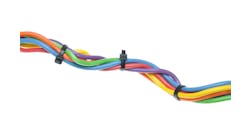This article was printed in CONTROL's July 2009 edition.
Greg McMillan and Stan Weiner bring their wits and more than 66 years of process control experience to bear on your questions, comments, and problems. Write to them at [email protected].
Stan: Shutting down and periodically restarting and running a plant to meet much lower capacity requirements is not a good option because of fixed costs and start-ups that are difficult and inefficient. Also, the most hazardous time is generally during shutdown and start-up because of the extremes in operating conditions and the extraordinary coordination required to keep flows and compositions in balance during rapid changes. Many plants would prefer to keep running, but at a low production rate.
Greg: We are so used to pushing capacity and optimizing costs at high rates that this downturn has caught us with our pants down, and that is not a pretty sight. Unfortunately, there are a lot of old plants in the U.S. The primary problems with running plants at low production rates are measuring and controlling the much lower flow rates and dealing with the changes in loop dynamics—problems made worse by old instrumentation.
Stan: The measurements from decades ago had an accuracy that is in percent of span. Even when today's smart transmitter states accuracy in percent of span, the calculation is often modified to reflect the change in span. The inherent accuracy of smart transmitters is significantly better and doesn't deteriorate as much with process and ambient conditions. The result is a measurement with much better turndown.
Greg: The plants that upgraded their instrumentation are sitting pretty, particularly if they went to newer flow measurement technologies. Differential head meters may be the only solution for big lines, but their rangeability is 4:1 or 8:1 at best, with special switching of differential pressure transmitter spans if you nail the maximum flow, don't have much measurement noise, and don't screw up the discharge coefficient from too low a Reynolds number at low rates. If you have a specialty chemical, food or beverage, or pharmaceutical plant, I would go with inline meters. In order of increasing rangeability and accuracy, I would consider, thermal mass flowmeters (for gas), vortex meters, magmeters (for liquids) and Coriolis meters.
Stan: In the past, the pipes were sized using economic sizing programs. The flowmeters were selected and sized using different criteria. In many cases, we got the process and mechanical engineers to change the pipe size, so the reducers were not so drastic. A line size meter was a sign someone had probably not done their job. However, the maximum velocity for the meter size was generally greater than the process' maximum velocity because you could not get an exact match of the meter size's max flow capability and the process' max flow requirement. Consequently the actual meter's rangeability was less than the catalog rangeability.
Greg: If you want the ultimate in rangeability and accuracy with density to boot, Coriolis meters with a 200:1 turndown and 0.05% accuracy (liquids) are my choice. We are just starting to understand the potential uses of density as an inference of composition in terms of statistical and first principle modeling, feed-forward control and material balance control.
Stan: A great flowmeter is not going to do you much good if you have a lousy control valve. In the 1970s and 1980s, piping valve manufacturers did a great job of dressing up on-off valves as throttling valves with positioners. A pig is still a pig no matter how you dress it. The stick-slip was 10% or more near the closed position. If you have a line-size rotary valve, the real rangeability is probably comparable to an orifice plate—a match made in heaven by piping manufacturers who want to sell you a lot of straight-run pipe.
Greg: Forget about the rangeability statements for valves in catalogs. Citations of valve rangeability in vendor literature are flat out wrong when these statements are solely based on the conformity to a theoretical inherent valve characteristic. According to this criterion, the rangeability of rotary piping valves is better than 100:1 when, in fact, they are the aforementioned pigs. The real rangeability decreases as the stick-slip increases and as the valve pressure drops as a fraction of the system pressure drop decreases. The high friction sealing surfaces of piping valves designed for tight shutoff, the low pressure drop of rotary valves, and common over-sizing practices make their real rangeability less than 10:1. Putting a smart positioner on these valves tells you the pig is beautiful. When the feedback is in actuator shaft position and not ball or disk position, the positioner is lying. (See "Improve Process Loops" at www.chemicalprocessing.com/articles/2007/200.html).
Stan: The solution is to use throttling valves with digital positioners designed by a control valve manufacturer, rather than a piping manufacturer. If line size permits, use a sliding stem valve.
Greg: I suggest users consider putting a smaller sliding stem valve in parallel with their existing valve. Please don't use the classical solution of split-ranged valves unless you like oscillations at the split-range point. Instead, use a valve position control scheme with an I-only controller or, even better, a model-predictive control strategy to simultaneously throttle both valves to get both rangeability and sensitivity as described in "What Have I Learned —Manipulation of Multiple Flows (Parts 1-3), March 9, 16 and 24 entries, at www.modelingandcontrol.com/.
Stan: OK, say we can throttle and measure the flow rate to turn down rather than shutting down the plant, can we control the plant? What is happening in the process? For example, the heat transfer coefficient decreases to the 0.65 power with flow.
Greg: Decreases in heat transfer coefficients increase thermal lags, which translate to an increase in loop dead time. Decreases in flow cause an additional increase in loop dead time from transportation delays and increase the process gains for temperature and composition loops.
The increase in dead time and process gain necessitates a decrease in the controller gain. It takes longer for the controller output to work through the dead band and stick-slip of the valve because of the slower rate of change of the controller output from a lower controller gain. The result is an increase in the dead time from the valve and a further decrease in loop performance. This is where a control loop with on-demand or adaptive tuning and gain scheduling is beneficial.
Stan: Are people going to be put to work improving the rangeability of the plant or let go to save short-term costs?
Greg: This is a great time to do some testing of the plant and design of experiments to define how to optimize the plant. If you wait till you need the capacity, it is too late.
Stan: One of the sure signs of a downturn in the economy is the amount of time your manager's door is closed.
The Top 10 Things that Go on Behind Your Manager's Closed Door
10. Games of Internet tic-tac-toe with a guy named Zarman in Pakistan
9. Thinking of how to reduce plant output without giving you a day off.
8. Thinking of how to reduce plant output while giving you all days off.
7. Debate on what kind of wires will be needed for the wireless devices
6. Work on report for upper management showing quarterly primary plant achievement is elimination of maintenance backlog.
5. A debate on the relative worth of staff members that tune loops versus ones that make product, as if there the two are not related.
4. Calculating how to retain his bonus after half of the staff was laid off, the production schedule cut, and raw materials are rotting.
3. Measuring for new drapes, so he can close the window and not see the plant when it's not running.
2. Complete denial that there may be a trade-off between full capacity and optimal efficiency.
1. Broad conceptualizations that will bring the production strategy forward without compromising quality, efficiency and expenditures—a.k.a, wild-ass guesses.

Leaders relevant to this article:





